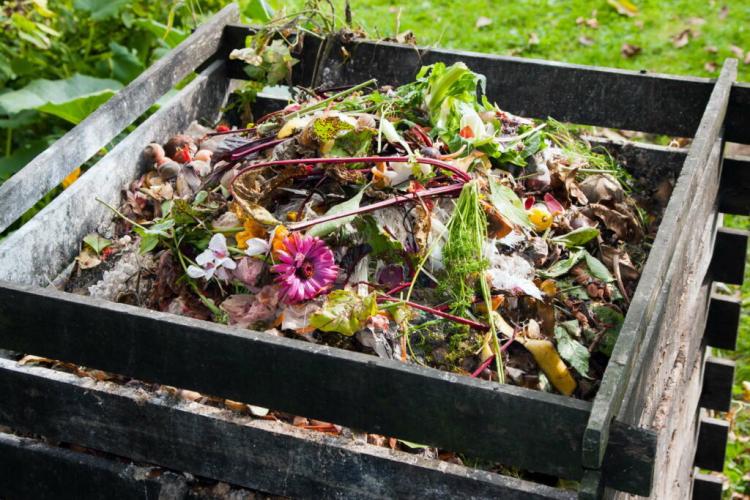Can Boston Fern Grow in Water?
Can Boston fern grow in water? The answer may surprise you. While it is not the most common way to care for a Boston fern, it is possible.
In fact, there are several ways to care for a Boston fern, and all of them are relatively easy.
Boston ferns (Nephrolepis exaltata) have been popular indoor plants since Victorian times.
These lush, green plants are easy to care for and look great as a centerpiece in any living room.
Boston fern can be grown in water. You’ll need to ensure that the roots are submerged in a glass or jar filled with clean, filtered water.
Change the water every week and make sure it is at room temperature.
We will help you through everything you need to know about growing this popular indoor plant.
Things to Consider Before Planting a Boston Fern in Water
Table of Contents
Growing plants like a Boston fern in water is an easy way to add some life to your home.
Before getting started though, there are a few things you should consider:
Finding the Right Container
The first thing you need to do is find the right container for your fern.
It’s important that the container has enough space for the fern’s roots. Make sure it’s wide enough and deep enough to fit them comfortably.
A glass bowl, jar, or vase works well, but you can also use a bowl to grow ferns if you prefer something more decorative. Hanging water bowl-like plant hanging baskets will also be a creative idea.
Choosing Your Water Source
When selecting water for your fern, it’s best to use filtered or distilled water if possible.
Tap water may contain chemicals like chlorine and fluoride which could be harmful to your entire plant over time.
If filtered or distilled water isn’t available, you can use tap water.
This will help keep your plants healthy and ensure that it gets all of the nutrients it needs from their new environment.
Things to remember:
The most important thing to remember is that the roots should always be submerged in water, so make sure to check the water level daily.
You Might Also Like: Is Apple A Fruit?
Light and Temperature Requirements
Boston ferns love bright indirect light so try placing yours near a window where it can get plenty of proper sunlight without being in sunlight all day long.
As far as temperature goes, these plants prefer temperatures between 55-85°F (13-29°C).
THINGS TO REMEMBER:
Any lower than this could cause the leaves to wilt and any higher could damage their delicate fronds. Keep an eye on both aspects when caring for your fern.
How to grow ferns in water?

With just a few simple steps, you can have healthy greenery in your home without any normal soil involved.
Growing Ferns in water is the perfect project for any gardening enthusiast and doesn’t require much effort or resources. Here’s how to do it:
Step 1: Prepare the Water Container
The first step is to prepare the container that will hold the water. You can choose the container size of your choice.
Fill the container with enough water so that it covers the roots of the plant when placed inside.
Step 2: Choose Your Plant Carefully
When selecting your fern, make sure that it looks healthy and has no signs of disease or damage.
Check for broken leaves or discoloration, which could indicate underlying problems with the plant.
Also, check that its roots are firmly attached to its pot before transferring it into the water-filled container.
Step 3: Place Plant in Container
Now you can carefully place your fern into its new home by gently pushing down on its base until all of its roots are submerged in water.
Make sure there’s enough space around each individual root so they don’t get too crowded together as this could cause rot or other issues over time.
Step 4: Maintain Regular Water Levels
Now that your fern is planted, maintenance is easy. Check the water levels and add more if necessary.
You may also have to add some liquid fertilizer every month to keep your fern healthy and growing ferns strong.
To prevent algae growth, use distilled or filtered water whenever possible and change out old water regularly every two weeks or so.

How to Take Care of Boston Fern?
Light Requirements
Boston ferns thrive in bright indirect light, but they don’t do well in sunlight. An east-facing window is ideal as it will provide the right balance of light without scorching your fern plant.
If you don’t have access to an east-facing window, a south-facing window should also suffice just make sure that the sun isn’t streaming directly onto the plant’s leaves, or else they may get burned.
Additionally, try not to move your Boston fern around too much; like most soil potted plants, it prefers consistency and stability.
Watering Needs
Boston ferns need regular watering during the growing season (spring through summer).
Water them until water runs out of the drainage holes at the bottom of their pot but don’t overwater or else your plant could be subject to root rot and other issues.
During wintertime when growth slows down, reduce watering significantly but still keep an eye on soil moisture levels so that it never completely dries out.
Fertilizer Needs
Fertilizing isn’t strictly necessary for Boston ferns but if you want your plant to look its best.
You can fertilize it twice a month with a liquid fertilizer diluted to half strength (or one-quarter strength during winter).
This will help make sure that it has all the nutrients it needs for vigorous growth.
You Might Also Like: Is Lavender Toxic to Cats?
What to look for to tell if a fern is alive or dead?
Figuring out whether your Boston fern is alive or dead isn’t always easy. These tips will give you an idea of what to look for when assessing their health:

Checking the Fronds
The first thing you should do when checking your Boston fern’s health is to look at the fronds. A healthy fern will have bright green fronds that are firm and upright.
If the fronds are limp and dull, then that could be a sign of overwatering or under-watering. Overwatering can cause root rot, which will cause the fronds to become wilted and discolored.
Underwatering can also cause wilting, but it will be more severe because the entire stem may become limp instead of just the tips of the leaves.
Brown spots
Other things to look for in the fronds are brown spots or edges this could be a sign of either overwatering or too much direct sunlight.
If you think you’re overwatering, try reducing your watering schedule until the brown spots disappear, and then adjust as needed going forward.

Checking Root System
If all looks good with your fronds but something seems off, then it may be time to check out what’s going on with the roots system.
To do this properly, you’ll need to carefully remove your Boston fern from its pot and make sure not to pull too hard because this can damage delicate roots.
Once removed from its pot, examine both sides of the roots.
If there are any visible signs of root rot (the most common disease affecting Boston ferns), then you may need to prune off any affected roots before repotting in fresh soil with better drainage.
Benefits of growing Boston Ferns in water
One of the main benefits of growing your Boston ferns in water is that it’s relatively mess-free.
If you’re not one for digging up soil or dealing with potting mix, this method may be ideal for you.

Additionally, you won’t have to worry about pests such as slugs and snails getting into your plants, as they won’t have direct access to the roots.
Boston ferns grown in water will also require less maintenance than those grown in soil.
When growing them in water, you don’t have to worry about fertilizing, pruning, or repotting your plants because the nutrients found in the water will provide all the nourishment they need.
All you need to do is make sure they get enough light and keep their container filled with clean, fresh water every few days.
You Might Also Like Boxwood Fertilizer
FAQ’s
Can Boston Ferns sit in water?
Boston Ferns can sit in water as long as the pot they are sitting in has a drainage hole.
If the pot does not have a drainage hole, then the fern will sit in water and rot.
In addition, you should avoid over-watering by making sure not to leave standing water in the pot after watering.
Can a Boston fern live in a shower?
Boston ferns can live in a shower as long as they have access to water and humidity.
The high humidity in a shower will help keep the plant healthy and looking its best.
It’s important to make sure that there is adequate drainage and ventilation in the shower.
Make sure the water does not sit in the shower for too long or else the fern may become overwatered.
Can ferns sit in water?
Yes, ferns can sit in water. In fact, they often grow in moist environments near ponds and rivers.
The water helps them to absorb the nutrients they need to survive.
Some ferns even have leaves that float on top of the water, which helps them to get more sunlight.
How do you propagate Boston Ferns in water?
Boston Ferns can be propagated by taking a small piece of the stem and putting it in water. Within a few weeks, the stem will grow roots and new leaves. Boston Ferns do not like to be potbound, so they should be transplanted into a larger pot when they start to become root-bound.
When transferring the plant, make sure to use a potting mix that is well-draining and light. You can even propagate other plants from just one stem.
Do Boston ferns grow and survive in an aquarium environment?
Boston ferns are a type of fern that can be found in humid environments such as rainforests and aquariums.
They are popular because they are easy to care for, and they remove toxins from the air. Boston ferns do not survive in dry environments.
Conclusion
Boston ferns are a popular houseplant because they’re easy to care for and require very little maintenance.
However, if you don’t have the time or patience to take care of a regular potting plant, growing your Boston fern in water may be a good alternative for you.
The fern roots will get all the nutrients it needs from the water, so you won’t have to worry about fertilizing or pruning them.






